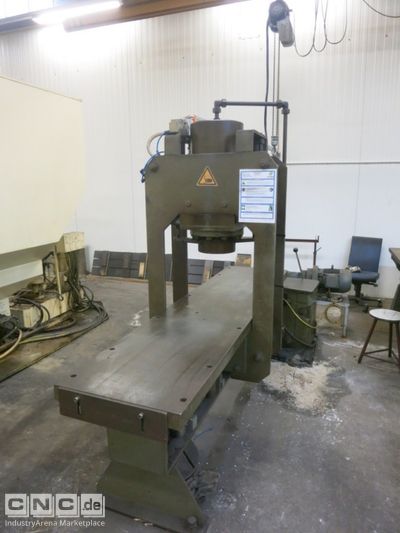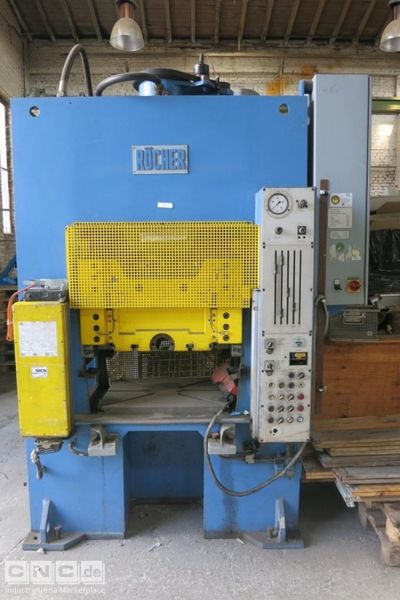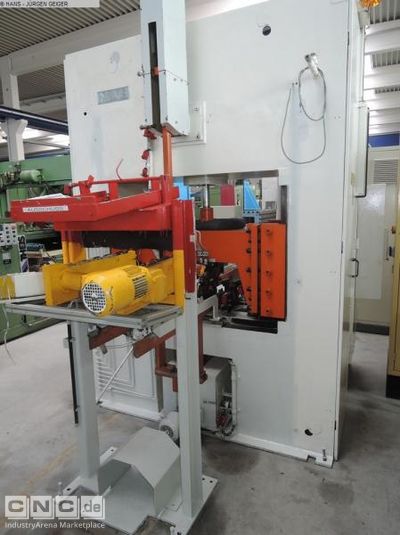Mercado de máquinas e instalaciones usadas
Máquinas usadas H-Frame Straightening Presses
Unlike single-column straightening presses, double-column straightening presses have two uprights or frames to which the cylinder and the moving table are attached. The uprights are connected by a crosshead that serves as a guide element to ensure that the moving table moves horizontally and parallel to the floor. Double-column straightening presses have higher rigidity and greater stability than single-column straightening presses, resulting in higher straightening accuracy and higher productivity. The press has a high compressive force and can be rated at a specific ton or force, which varies depending on the size of the workpiece being straightened. Double-column straightening presses are usually larger than single-column straightening presses and therefore require more space. They can be operated manually or automatically and are generally more versatile than single-column straightening presses. The press is used in the automotive industry, aerospace industry, heavy industry and mechanical engineering, where large and heavy workpieces have to be straightened.

|


|


|


|











